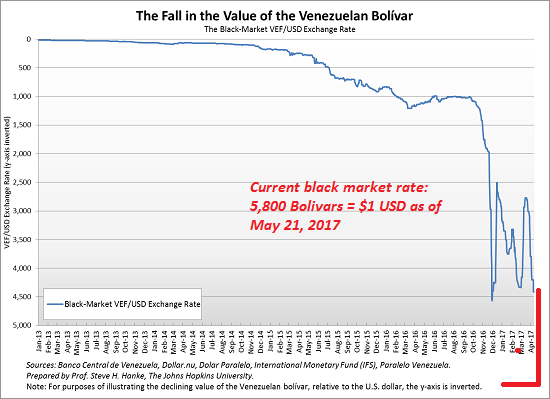Does the World End in Fire or Ice? Thoughts on Japan and the Inflation/Deflation Debate
Japan has managed to offset decades of deflationary dynamics, but at a cost that is hidden beneath the surface of apparent stability.
Do we implode in a deflationary death spiral (ice) or in an inflationary death spiral (fire)? Debating the question has been a popular parlor game for years, with Eric Janszen’s 1999 Ka-Poom Deflation/Inflation Theory often anchoring the discussion.
I invite everyone interested in the debate to read Janszen’s reasoning and prediction of a deflationary spiral that then triggers a monstrous inflationary response from central banks/states desperate to prop up their faltering status quo.
Alternatively, economies can skip the deflationary spiral and move directly to the collapse of their currency via hyper-inflation. This chart of the Venezuelan currency (Bolivar) illustrates the “skip deflation, go straight to hyper-inflation” pathway:

If we set aside the many financial rabbit holes of the inflation/deflation discussion, we find three dominant non-financial dynamics in play:demographics, technology and energy.
As populations age and retire, the resulting decline in incomes and spending are inherently deflationary: less money is earned, and less money is spent, reducing economic activity (gross domestic product).
The elderly also sell assets such as stocks, bonds and their primary house to fund their retirement, and if the elderly populace is a major cohort (due to low birth rates and increasing life spans, etc.), then this mass dumping of assets is also deflationary, as the increasing supply of sellers and the stagnating supply of buyers pushes prices lower.
Recession and stagnation are also deflationary. Shift 10 million workers from secure fulltime employment with full benefits to low-paid, insecure part-time jobs with few benefits, and you have a self-reinforcing deflationary spiral in action: a significant percentage of the workforce is now receiving far less income, which necessarily slashes their spending and just as importantly, their ability to borrow huge sums of money to buy vehicles, homes, overseas vacations, etc.
…click on the above link to read the rest of the article…